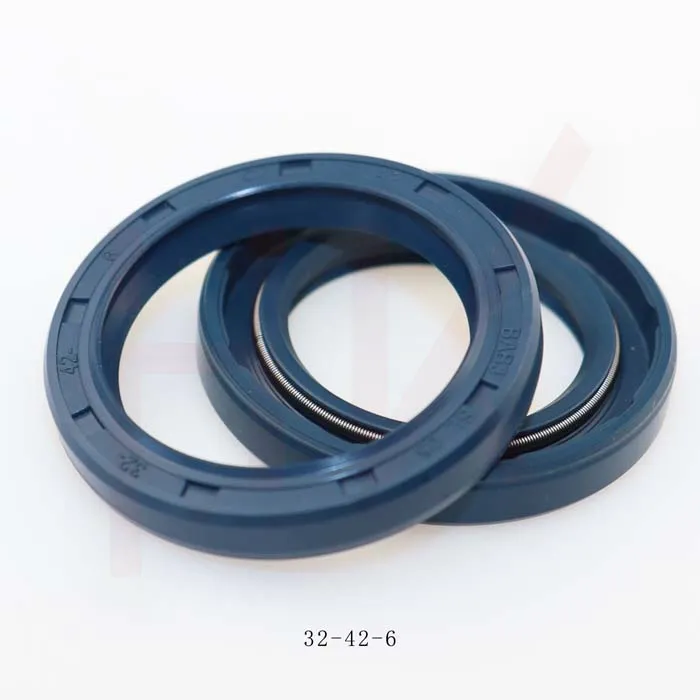Nën . 11, 2024 03:02 Back to list
Understanding Metric Rod Wiper Seals for Enhanced Performance and Durability
Understanding Metric Rod Wiper Seals Essential Components for Fluid Power Systems
In the world of fluid power systems, the importance of seals cannot be overstated. Among the various sealing solutions available, metric rod wiper seals play a critical role in ensuring the smooth operation of hydraulic and pneumatic cylinders. These seals are designed to prevent contaminants from entering the cylinder while also keeping the hydraulic fluid contained within, thereby enhancing the overall efficiency and longevity of the system. In this article, we delve into the functions, types, materials, and advantages of metric rod wiper seals.
Functions of Metric Rod Wiper Seals
The primary function of metric rod wiper seals is to wipe away dirt, dust, and other contaminants from the rod as it extends or retracts. This action helps to maintain a clean rod surface, which is vital for reducing wear on the seals and extending the lifespan of both the rod and the cylinder. By keeping foreign particles at bay, these seals help to prevent internal leaks that can lead to hydraulic fluid loss and system failure.
Metric rod wiper seals are typically installed at the cylinder's rod exit point, where they engage with the rod’s surface during its motion. The wiper lip of the seal is specifically designed to provide a tight fit around the rod while allowing it to move freely. This dynamic sealing action ensures that the contaminants do not access the inner components of the hydraulic system.
Types of Metric Rod Wiper Seals
Metric rod wiper seals come in various designs to cater to different applications and pressure ratings. The most common types include
1. Single Lip Wiper Seals These seals feature a single wiping edge that makes contact with the rod. They are suitable for applications where contamination levels are moderate and can manage typical wear.
2. Double Lip Wiper Seals Designed with two wiping lips, these seals offer enhanced protection against dirt and moisture, making them ideal for harsher environments.
3. U-Cup Wiper Seals These seals are shaped like a U and provide a larger contact area with the rod. U-cup designs are often used in applications where improved sealing performance is critical.
4. Polymer Wiper Seals Made from high-quality polymers, these seals exhibit excellent resistance to wear, temperature fluctuations, and chemical exposure. They are increasingly being used in modern hydraulic systems due to their durability.
Materials Used in Metric Rod Wiper Seals
metric rod wiper seals

The choice of material for metric rod wiper seals is paramount, as it directly impacts performance and durability
. Common materials include- Nitrile Rubber (NBR) Known for good resistance to oil and abrasion, NBR is widely used for low to medium-pressure applications.
- Polyurethane (PU) This material offers exceptional wear resistance and is suitable for high-pressure applications, making it a popular choice in industrial and mobile equipment.
- Fluoroelastomers (FKM) With excellent thermal and chemical resistance, FKM seals are ideal for harsh environments where exposure to chemicals is common.
- Thermoplastic Elastomers (TPE) These materials combine the flexibility of rubber with the durability of plastic, providing a versatile option for various applications.
Advantages of Using Metric Rod Wiper Seals
1. Enhanced Protection Metric rod wiper seals significantly reduce the risk of contaminants entering the hydraulic system, prolonging the life of internal components.
2. Improved Efficiency By minimizing internal leaks and maintaining lubrication, these seals contribute to the overall efficiency of fluid power systems.
3. Cost-Effectiveness Investing in high-quality wiper seals can lead to lower maintenance costs and decreased downtime, ultimately improving productivity.
4. Versatility With various designs and materials available, metric rod wiper seals can be tailored to meet the specific needs of different applications, from construction equipment to manufacturing machinery.
In conclusion, metric rod wiper seals are indispensable components of hydraulic and pneumatic systems. Their ability to protect against contaminants and maintain system integrity highlights their value across various industries. By understanding their functions, types, and materials, engineers and maintenance personnel can make informed choices that enhance system performance and reliability. Whether in heavy machinery, automotive applications, or industrial equipment, the right metric rod wiper seal can make all the difference in achieving optimal operational efficiency.
-
The Trans-formative Journey of Wheel Hub Oil Seals
NewsJun.06,2025
-
Graphene-Enhanced Oil Seals: Revolutionizing High-Pressure Oil Sealing
NewsJun.06,2025
-
Future of Hydraulic Sealing: Advanced Intelligent TCN Oil Seals
NewsJun.06,2025
-
Don’t Let a Broken TCV Oil Seal Ruin Your Day
NewsJun.06,2025
-
Bio-Inspired Dust Seals for Better Sealing Performance
NewsJun.06,2025
-
Biodegradable and Sustainable Hydraulic Seal Materials
NewsJun.06,2025
-
Top Oil Seal Solutions for Your Industrial Needs
NewsMay.22,2025
Products categories
















